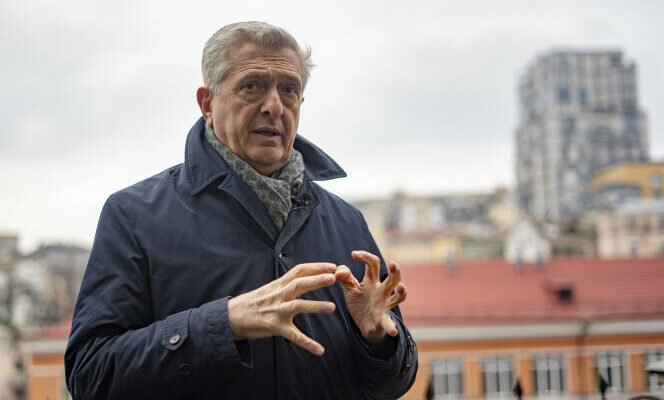Filippo Grandi is United Nations High Commissioner for Refugees. Nearly two years after the Russian invasion, he emphasizes that the humanitarian needs of displaced people and refugees remain immense. He also invites Europe to extend the measures applied to more than six million Ukrainians to other refugees.
You are finishing a visit to Ukraine. What situation did you observe?
My trip took me to the cities of Odessa, Kryvy Rih, Dnipro, Kharkiv, Irpin and Kiev, the most exposed places near the front line. I noted that the damage suffered by civil infrastructure, in particular houses and apartments, is greater than in 2023.
The number of displaced [à l’intérieur du pays] increased. Between three and four million people had to leave their homes, destroyed by a drone or rocket. The majority of them live a few kilometers from home, with family members or friends. This situation changes rapidly depending on the evolution of military offensives. The most vulnerable are especially the elderly who have not been able to leave, the unemployed and children. The majority of the latter are doing their schooling remotely because school buildings were hit by airstrikes or do not have shelter.
These millions of displaced people are in need of basic humanitarian aid. Disconcerted by the attacks, often at night, they also need psychological support and access to state aid when they have lost their apartment or part of their property.
What is specific to Ukraine is that people are still asking not only for a blanket to sleep in the reception centers, but also for materials to rebuild their homes – and thus not having to stay in these reception centers. depressing reception or shared apartments. I haven’t seen this dual need elsewhere.
What are the prospects for refugees?
We estimate that there are 6.3 million Ukrainian refugees across the world, the majority of whom are in Europe. Their profile remains unchanged. They are women, children, people over 60 years old. The risks of trafficking and exploitation were less than feared. Surely because the huge influx of people has generated a lot of attention on them.
Recently, there has been a small increase in the number of men fleeing military conscription but it is not very significant. Since the start of the war on February 24, 2022, between a million and a million and a half people have returned to their country, including 900,000 for more than three months. These return movements are for the most part commuting – it is a way of seeing families again and assessing the situation on site – even if we are seeing a slight increase in people returning for longer periods. According to our surveys, the proportion of refugees who want to eventually return to Ukraine is fairly stable – 60% to 70% of them – but they express hesitation about the situation.
You have 60% of this article left to read. The rest is reserved for subscribers.
